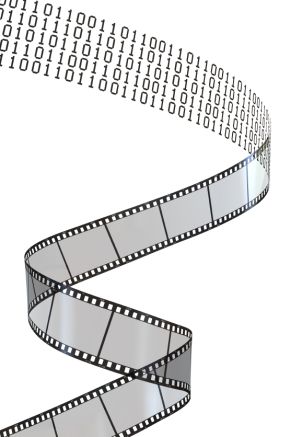The Importance of Digitalization
February 25, 2014
 Dr. House in the medical drama “House M.D.” sometimes ruminates over medical mysteries or rants wildly, while reviewing his patients’x-rays or other images on an x-ray view box. The bright view box contrasting dark film looks dramatic in the TV show, but it has become an ancient relic in real clinics. Instead of standing before the x-ray view box, doctors scroll and click through images on the computer screen.
Dr. House in the medical drama “House M.D.” sometimes ruminates over medical mysteries or rants wildly, while reviewing his patients’x-rays or other images on an x-ray view box. The bright view box contrasting dark film looks dramatic in the TV show, but it has become an ancient relic in real clinics. Instead of standing before the x-ray view box, doctors scroll and click through images on the computer screen.
Digital radiography is produced by a digital image-capture device with digital sensors. It exposes patients to less radiation than traditional x-ray; its production bypasses chemical process; it is time efficient; it is digitally stored for easier retrieving and browsing. Digitalizing of radiological images is certain improvement from the traditional one. The Recovery and Reinvestment Act/Health Information Technology for Economic and Clinical Health (ARRA-HITECH) Act has encouraged physicians to adopt electronic health records by providing incentives for implementing and utilizing the technology. Many hospitals and physicians have moved on from documenting medical findings and patient encounters on paper charts to typing them onto the computer software specifically tailored for this use. Medical images are not an exception for the change. With all the medical records going electronically, physicians have easy access to patients’ entire medical history at their fingertips and move back and forth between medical records and images especially when medical history is necessary to understand images better or vice versa.
Digitalization of radiography has opened doors for other technological inventions in producing, accessing, and interpreting images. Currently, 3-dimentional reconstruction of CAT (computed tomography) scan of the entire body is actively investigated. Images can be accessed on a physician’s personalized computer, away from his or her clinic, and the capability has been the crux of teleradiology. Images may become available on cell phone in the near future. Physicians can use digital tools to zoom in and out, or measure distances, angles, and tissue density, and these functions provide crucial and reliable information that eyes alone could not capture in the age of analogue images.
Electronic storing and browsing of medical images has made information technology a vital part of radiology. Particularly integration of RIS (radiology information system) and PACS (picture archiving and communication system) has gained much interest. The advance and intricacy of the current health care setting requires radiologists to understand and interpret an image, not just as an isolate, but as a piece that fits into the context of the patient’s complicated medical and care history. Through the integration, physicians can get more information in a more timely way and communicate with other health care providers involved in the care more efficiently. Ultimately this would provide better patient care and patient satisfaction. Other perks of integration of the systems that do not regard direct patient care are economical health data management and mining that can be used in tracking quality of care.
Digitalization of x-rays and the other radiological imaging has passed the no point of return, significantly changing the day-to-day practice of radiology and it will eventually shape the field’s future in the forefront of medical and information technology.


